Two young competitors enter the ring wearing matching white coats and serious expressions. They’re holding red plastic boards. Braced between the boards is a black-and-white Hampshire pig named Ann. The handlers, wearing oversized white lab coats and hats too big for them, are seven-year-old Asher Blenkiron and eight-year-old Zarlei Mears.
They guide Ann around an obstacle course on fake green turf in front of a stand full of spectators at the Sydney Royal Easter Show. First, they usher her through a gated fence, then around a set of barrels, then through another fence before walking under an archway and back into the pen.
The crowd erupts into applause. Junior pig handling is a serious event, and Asher has just won first prize in the under-13 division. Zarlei comes second.
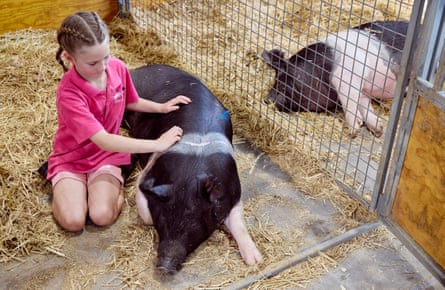
Pig handling is in Asher’s blood. Her family breed Hampshire pigs in South Australia’s Barossa Valley. They’re regulars on the royal show circuit and longtime competitors at Adelaide royal show. This is their fourth year at the Sydney show.
The long trip was worth while: in addition to Asher’s first prize ribbon, the stud took out the top award of best pig in show.
Asher’s mother, Amy Blenkiron, says she is happy with her daughter’s success.
“I’m really proud because it shows how we’ve passed our pig parading on to her,” Blenkiron says.
“We have done amazing this year; we got ‘pig of show’ and we’ve been awarded lots of ribbons as well.”
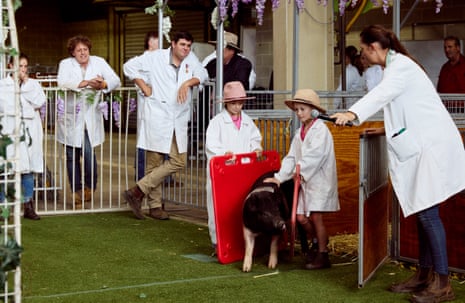
Unlike others competing at the show, the Blenkirons do not raise or train their showing animals differently to other livestock.
“We don’t actually have specific show pigs; we take them out of the shelters we use so what you see here today is what you’ll get from paddock to plate,” she says.
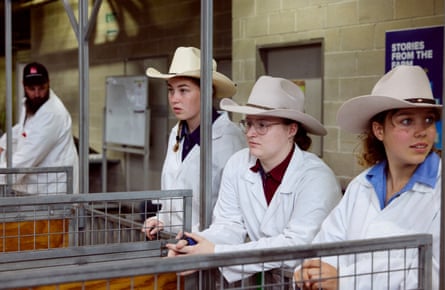
Pig handling received an unlikely boost in international attention in the past year, thanks to a viral video of California teenager Karis Dadson’s icy stare on the hog showmanship circuit in the United States. Convention states competitors must maintain eye contact with the judge as they ‘“tap” or guide their pig.
The rules are a bit more relaxed in Australia, Blenkiron says.
“In the US, pig handling is an actual sport where as here it is still quite low key so we don’t have to tap them as we walk – we can literally just parade them how they are, with their personalities,” she says.
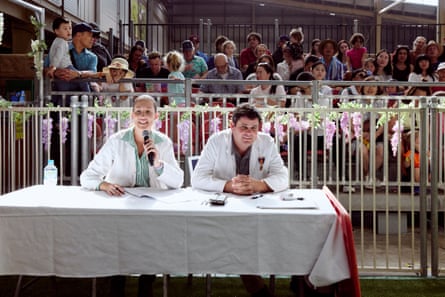
That makes it a friendly event for those new to livestock showing, says ring steward and announcer Kristen Temessl. Controlling a pig with boards is easier and less stressful than using a stick, and is based on the conventional wisdom that “if a pig can see through it, they will go through it”.
“I like the boards, especially for our junior handlers who are smaller, younger and not quite as strong as some of our adult handlers,” she says.
Temessl, who works as a schoolteacher in Parkes in central western New South Wales, says pig handling is a good opportunity to bring visiting school students into the ring.
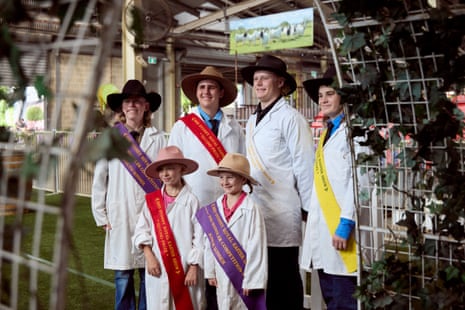
“It brings in students from all of the schools that participate – we even sometimes grab students from out of the crowd and they have to parade a pig around the course we have set out for them,” she says.
“[The judges] are looking for things like: can they work together, are they able to control the pig, do they actually know how to use the boards. All of those scores combined will give us a winner at the end of the competition.”
The presentation of the pig is also important. Temessl says competitors will choose pigs months in advance based on their genetics and type, and give them a special feed ration to make sure they’re in show condition.
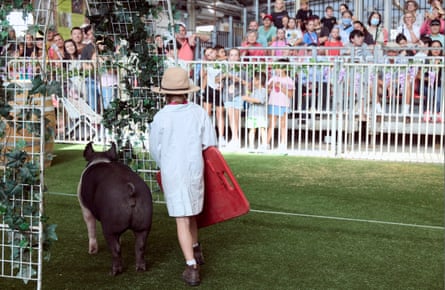
“Come show time, we wash them, we shampoo them, and for the white pigs, we powder them and for the coloured pigs we oil them to present them perfectly.”










Comments (…)
Sign in or create your Guardian account to join the discussion